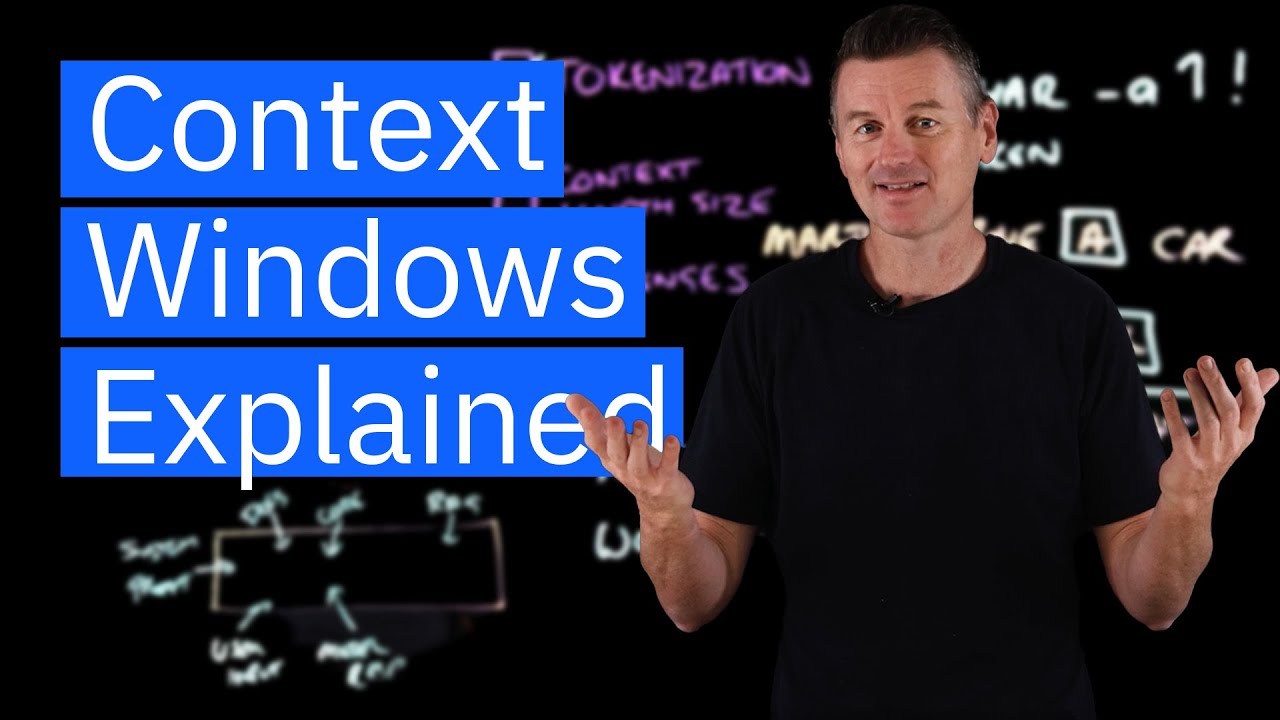The video explains the concept of a context window in large language models (LLMs), which acts as the model’s working memory and determines how much of a conversation it can remember while generating responses. It highlights the significance of tokenization, the challenges of larger context windows, and the associated computational and safety concerns, emphasizing the need for a balance between performance and potential risks.
The video explains the concept of a context window in large language models (LLMs), likening it to the model’s working memory. The context window determines how much of a conversation the LLM can remember while generating responses. When the conversation exceeds the context window’s capacity, earlier parts of the dialogue are forgotten, leading the model to make educated guesses based on the remaining context. This can result in inaccuracies or “hallucinations” in the model’s responses, highlighting the importance of understanding context windows for effective interaction with LLMs.
The video introduces the concept of tokenization, which is crucial for understanding context windows. Tokens are the smallest units of information that LLMs use to process language, and they can represent characters, whole words, or even phrases. The video illustrates how different sentences can be tokenized differently, emphasizing that a single word in English typically corresponds to about 1.5 tokens. This understanding of tokens is essential for grasping how context windows are measured and utilized in LLMs.
The size of the context window is significant because it dictates how many tokens the model can consider at once. The video discusses the self-attention mechanism used by transformer models, which calculates the relationships between tokens in the input sequence. As the context window size has increased over time—from around 2,000 tokens in early models to 128,000 tokens in more recent ones—this has allowed for more extensive and nuanced conversations. However, the video notes that filling such a large context window can happen quickly due to various inputs, including user prompts, model responses, system prompts, and additional documents or data.
While larger context windows can enhance the model’s performance, they also present challenges. The computational requirements for processing longer sequences increase quadratically, meaning that doubling the number of tokens can require four times the processing power. Additionally, the performance of the model can degrade when it has to process excessive detail, particularly when relevant information is buried in the middle of a long context. This can lead to cognitive shortcuts and reduced effectiveness in generating accurate responses.
Finally, the video addresses safety concerns associated with longer context windows. A larger context length can create a broader attack surface for adversarial prompts, making it easier for harmful content to be embedded within the input. This can complicate the model’s ability to filter out malicious instructions effectively. Ultimately, the video emphasizes the need to balance the advantages of a larger context window with the potential computational and safety challenges that come with it, underscoring the importance of understanding how context windows function in LLMs.
